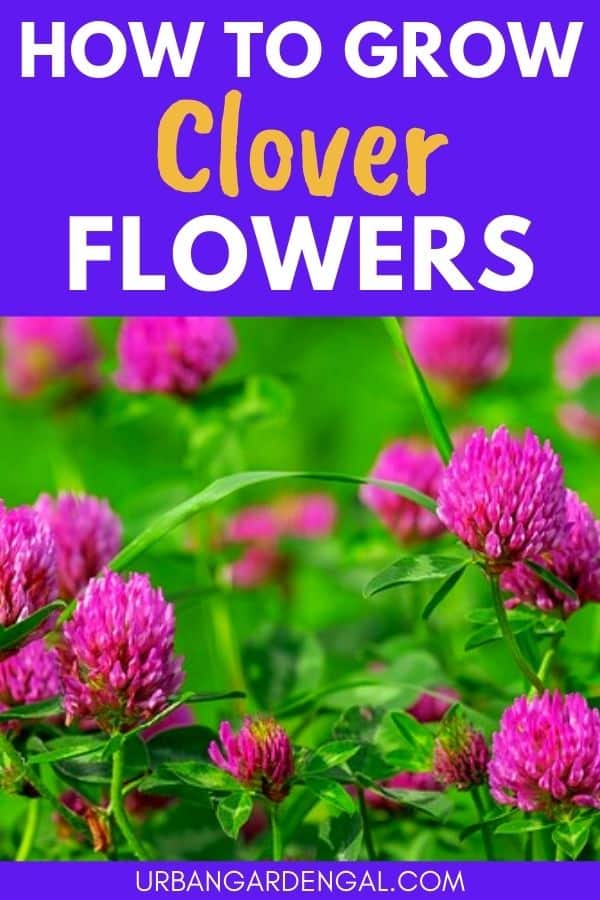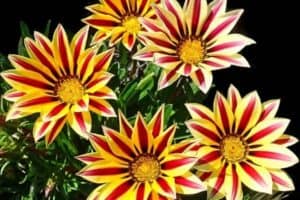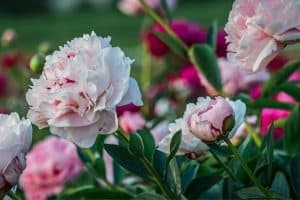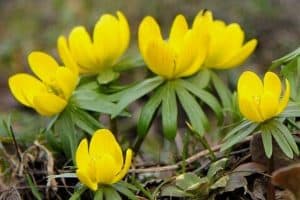Clover flowers are an excellent addition to lawns and gardens and they’re great for attracting bees to your garden.
In this guide to clover flowers you’ll learn about the many different types of clover flowers, the benefits of planting clover in your garden and I’ll answer some common questions about growing clover flowers.
This post contains affiliate links. Please read the disclosure for more info.
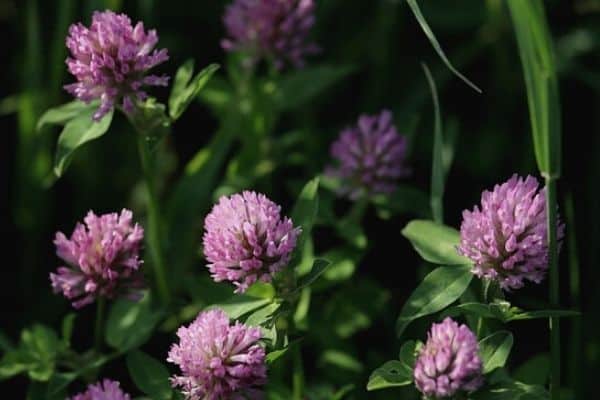
Clover flowers are part of the genus trifolium, meaning three leaves, and they’re from the same plant family as beans and peas.
Clover plants produce an abundance of flowers that can be white, pink or red in color.
Some of the most common varieties of clover include:
White Clover (Trifolium repens)
White clover, also known as Dutch clover, is a creeping perennial plant that grows 2 to 8 inches (5 to 20 cm) tall and spreads out over 3 feet (1 metre) wide.
It grows well in cool conditions and can tolerate poor soil conditions.
White clover is commonly grown by beekeepers for the pollen and nectar.
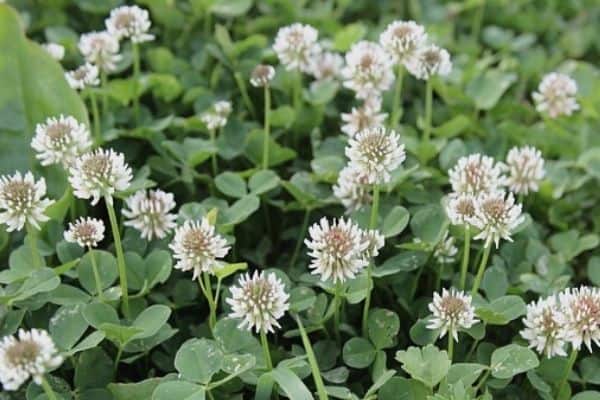
Red clover (Trifolium pratense)
Red clover is a biennial or short lived perennial with small clusters of pinkish-red flowers.
It grows well in full sun or partial shade and begins blooming 10 to 12 weeks after planting the seeds.
Red clover is frost tolerant and will grow in poor soil as long as it’s not too alkaline.
In hot climates red clover is best grown as an annual.
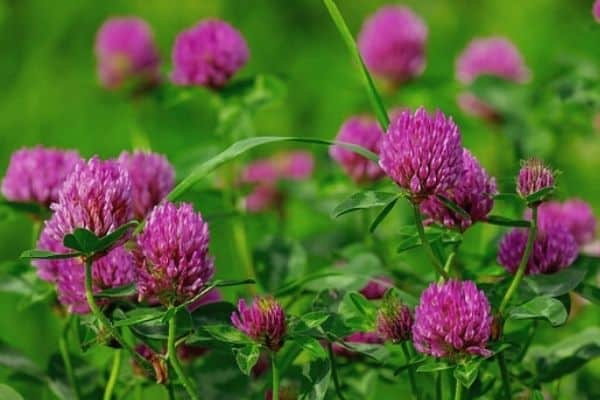
Crimson clover (Trifolium incarnatum)
Crimson clover, also called Italian clover, is one of the most beautiful clover varieties with tall red flowers.
It can be planted in fall and makes an attractive cover crop over winter.
Crimson clover is frost tolerant but doesn’t grow well in waterlogged soil.
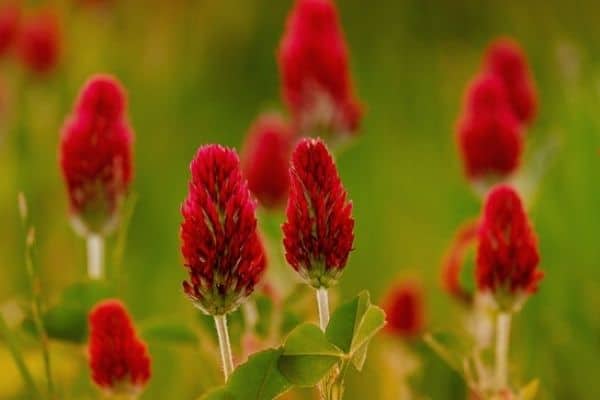
Benefits of clover
- Provides a valuable source of nectar for honeybees
- Improves pollination for surrounding trees and plants
- Slows evaporation to improve moisture in the soil
- Fixes nitrogen from the air and releases it into the soil
- Helps to reduce weeds
- Stays green longer than other types of grass
- Drought tolerant once the plants are established
- Grows back easily, even after being mowed
- Useful for livestock feed – the plants are high in calcium, phosphorus and protein
Clover seeds
Annual clover plants produce seed in spring or early summer.
Most of the seeds will germinate in fall of that year, but some seeds can remain dormant and germinate in the following years.
Perennial clover plants also produce seeds, but the plants can live more than one year.
Planting clover seeds
The best time to plant clover seeds is mid-spring, when the risk of frost has passed.
You can also plant clover seeds in fall if you live in an area with mild fall temperatures.
Prepare the soil by digging in some aged compost and rake the soil flat.
Plant the seeds about ¼ inch (8mm) deep and space them out 4 inches (10 cm) apart.
Rake the soil over the seeds and water the area thoroughly.
Clover seeds usually germinate 7 to 14 days after sowing.
Where to plant clover flowers
Clover can be planted amongst your lawn, underneath fruit trees and vines, around the vegetable garden or as a cover crop when the soil is bare.
You can also include clover seeds in a wildflower seed mix.
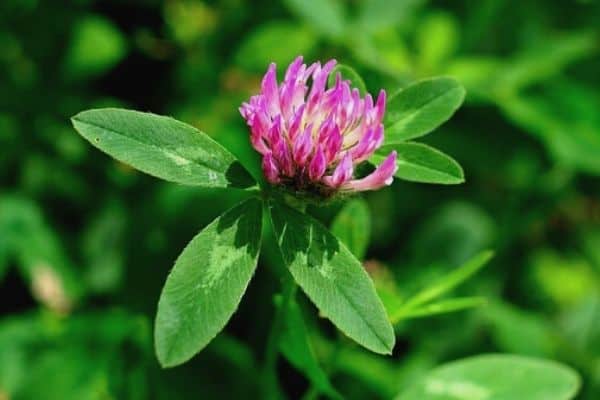
Common questions
Are clover flowers frost tolerant?
Yes, established clover plants can withstand frosts and temperatures down to 0℉ (-18 ℃).
Are clover flowers edible?
Clover leaves, flowers, stems and seeds are all edible and can be used fresh or dried.
Clover flowers can be used in salads, as a garnish or to make herbal tea.
Does clover come back each year?
Most clover varieties will grow back year after year
Perennial clover plants will die back if temperatures become too hot or cold, but new growth will emerge the following year. [1]
Annual clover varieties reseed easily so you’ll have new plants popping up the next year.
Does clover reduce weeds?
Yes, clover plants compete with weeds, so they’re great for keeping unwanted weeds out of your lawn and garden.
So there is my guide to growing and caring for clover flowers.
RELATED ARTICLES
Have you tried growing clover in your garden? Let me know in the comments below.
Are you on Pinterest? I have boards dedicated to Flowering Plants and Gardening Tips that you may enjoy. You can also find me on Facebook.

